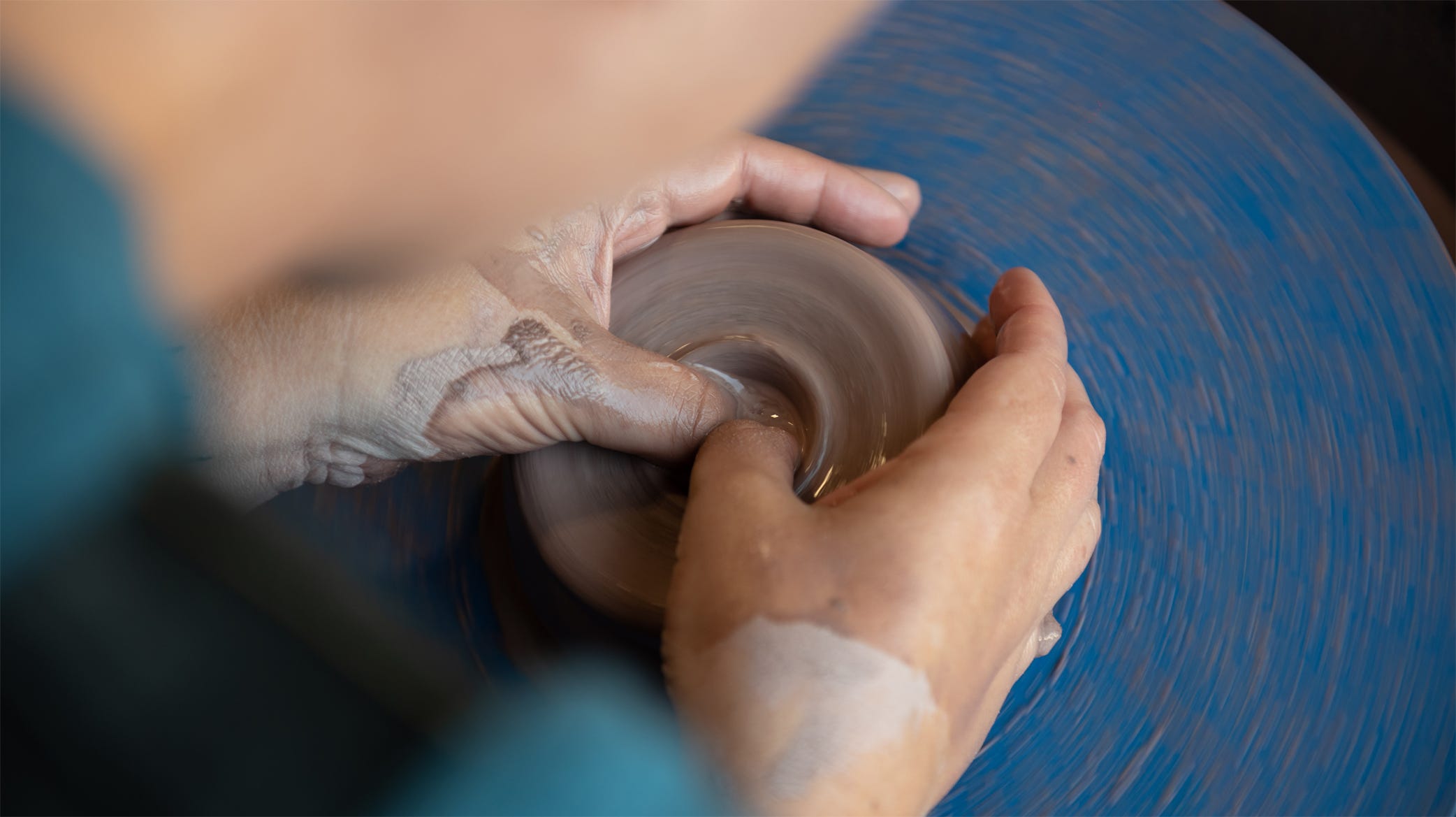The Lump of Clay
Or, Redefining “Perfect”
Last post we talked about how perfectionism can ruin a writer. Since I first wrote it, I came across this example of “outside of the box” thinking from Lao Tzu, about 2,500 years before that even became a saying, and about 2,501 years before the term became cliché. (He was waaaay ahead of his time.)
I love this because it’s a completely different way to think about the whole idea of perfectionism. Maybe the problem isn’t that our writing less than “perfect” in first draft. Maybe the problem is that our idea of perfect is... imperfect?
There’s actually a lot of other evidence to back this up. Think about the times you have sat down to write the “perfect” piece. We struggle in the first draft to put down one perfect word after another. Sometimes we have the added pressure of a deadline – a blog post due the next day or something. And then we beat ourselves up when we don’t get it “right” to first go. Worse, the writing often feels stilted and stale. Is that anyone’s definition of perfect?
It’s no coincidence that some of our best work comes when we’re not even trying. Has this happened to you? You get a stroke of inspiration, rush off to find a pen, and an hour later you’ve gotten 500 or 1,000 words down that spilled from you as easily as rice from a bag.
Perhaps you’ve noticed too that even then it doesn’t always go right. Sometimes we go back to it a day or two later and find it’s not as “good” as we first imagined. So discouraging!
But we shouldn’t be so easily disappointed. Because that’s actually the perfect way to write: get the idea down first in a tumble of words, and rewrite it later. It’s not going to be perfect that first go-around – and it shouldn’t be.
The Pottery Analogy
My wife is a potter. She makes all these incredible mugs and teapots and Christmas ornaments from clay. I am always amazed at how she does it. I mean, I know how she does it. It takes many, many steps to make a teapot:
Step 1 – Take a lump of clay and throw it onto the wheel
Step 2 – Form that lump of clay into whatever it is you’re making such as a teapot
Step 3 – Fire that teapot in the kiln
Step 4 – Glaze the teapot with whatever colours and patterns and drawings you’d like
Step 5 – Fire the vase teapot again, open the kiln lid like it’s Christmas, and see what comes out
This is a shortened version with very generalized steps for the sake of brevity. But let me ask you this. Do you think potters should expect their clay to just turn into a fully formed teapot the moment they throw the clay onto the wheel? Of course not!
Yet so many writers get discouraged when they can’t do essentially the same thing. That first draft is just a lump of clay thrown down onto the wheel. It’s not supposed to look like a teapot at this point. And it would be very freaky if it did!
The goal is to get words down, then go back and start turning them into a teapot.
What Does “Perfect” Look Like Then?
I believe it’s high time to redefine what “perfect” means for a first draft. Here’s my idea of first-draft perfection:
Lots of words on the page
Perhaps disjointed thoughts, like the writer’s mind going in two or more directions at once
Maybe the faint shape of a narrative; maybe not
Little nuggets of gold sparkling among the piles and piles of ore
Those “nuggets of gold” are the bits of great writing – the ideas that strike you as, “Yes, I like that!” or “Uh, huh – I’m on the right track there...” The thing is, the best way to get those nuggets to write with wild abandon and let them tumble out.
Let’s break it down into steps like we did with pottery above:
Step 1 – Throw down a bunch of words on the paper. You may have an idea of the finished piece in mind, though you may not. Your goal is simply to get that lump of clay down.
Step 2 – After some time away, read the words and start forming them into whatever piece you’re writing – poem, short story, article, whatever.
Step 3 – Alternate between editing and letting the piece rest, editing and letting it rest.
Step 4 – Do a final polish.
Step 5 – Send the piece out to be published or enter it in a contest. Or put it into a locked safe like J.D. Salinger did. Whatever is your wont.
As a Step 5a, you could show to friends and family before sending out as well. This is an advantage we have over potters: we don’t need a kiln, so we can change our teapots anytime!
If you’re writing “perfectly”, you should be writing several revisions before it’s ready to send out. Sometimes that means three. Sometimes it means 33. That’s another about writing – it’s only ready when it’s ready.
Sometimes pottery takes several attempts, too. Everything I described above about making a teapot only happens when everything goes right. Often, the pot will collapse on the wheel, and the potter has to start again. Or the lid doesn’t fit. Or the spout won’t attach properly. Or the whole thing cracks and is unusable. Or it explodes in the kiln, destroying it and whatever it takes out with the impact. Many different situations that can lead to disaster, and the potter has to start all over again.
So in that way, we writers have it easy! No tiny shards of exploded pottery to clean up if something goes wrong. We just keep editing – or at the very worst, open a new document or grab a fresh piece of paper.
Key Takeaway – it’s not that our work isn’t perfect, it’s that our idea of perfection is imperfect. You can’t write a teapot in the first draft. We need to change our idea of “perfect” to include the reality that writing is a process that goes through many drafts.
Fun Writing Exercise
Have you ever sat down to write a “serious” piece of work? Spend 10 or 20 minutes and describe how it worked out for you. Then describe those times when inspiration hit and you just went with it. Which writing did you like better?
I leave you with a YouTube video showing absolutely all the steps to making a teapot – just scroll down below. It’s both inspiring and meditative!
Until next time, keep writing with wild abandon!
~Graham









For a long time, I've leaned heavily on the side of waiting for inspiration and then writing things perfectly in the first draft itself. This post has inspired me to refine that inefficient approach and make it iterative and predictable. Thanks!
Love the pottery analogy so much. Thanks for writing this, Graham!